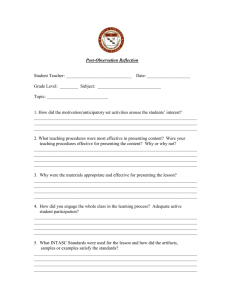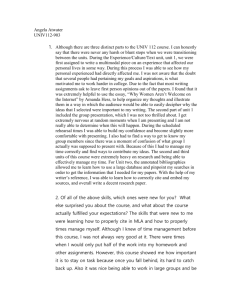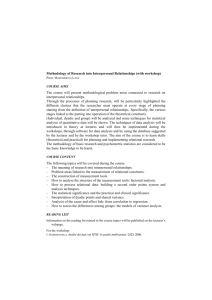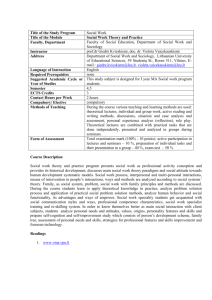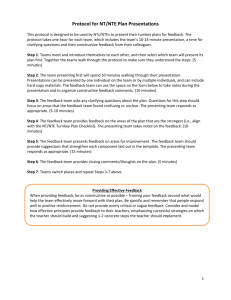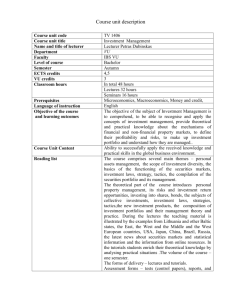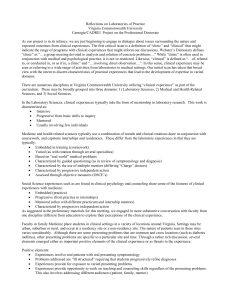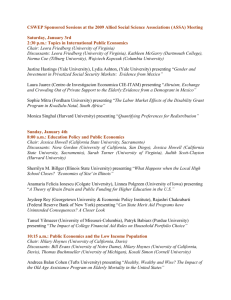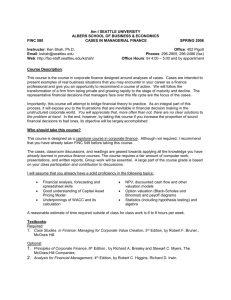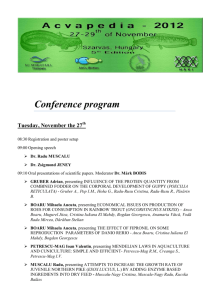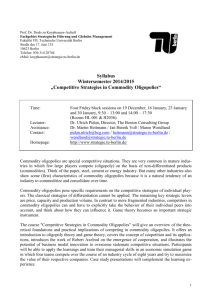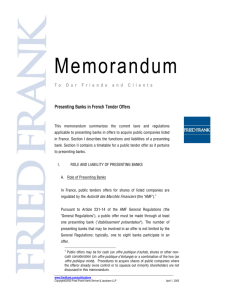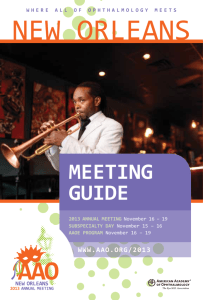Syllabus
advertisement
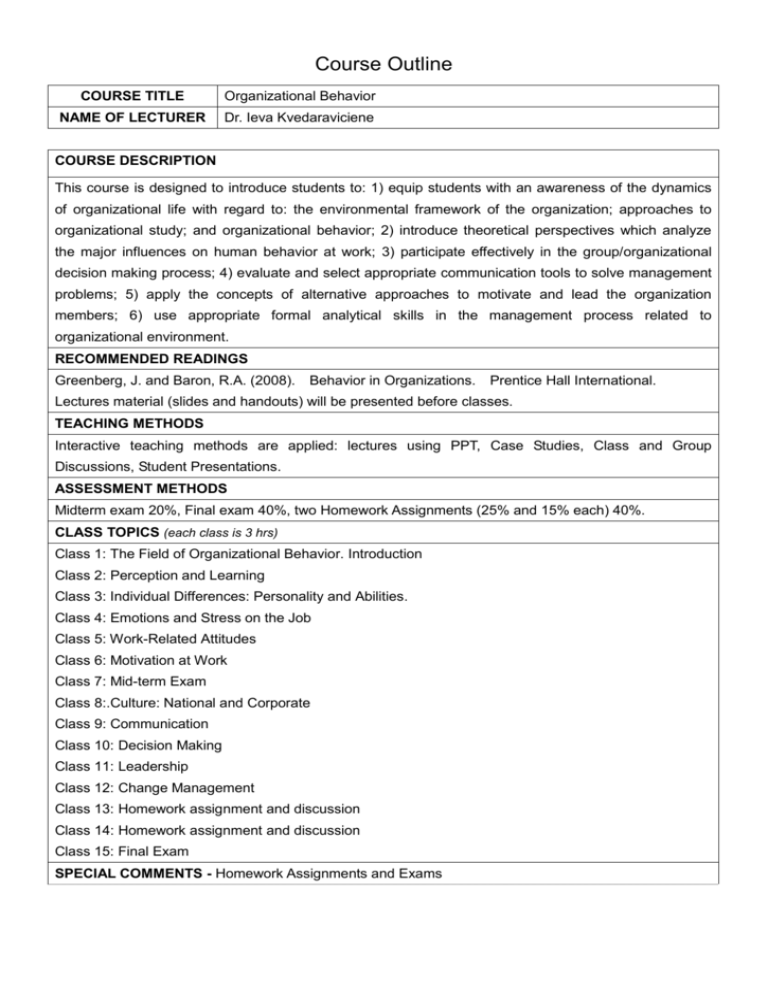
Course Outline COURSE TITLE Organizational Behavior NAME OF LECTURER Dr. Ieva Kvedaraviciene COURSE DESCRIPTION This course is designed to introduce students to: 1) equip students with an awareness of the dynamics of organizational life with regard to: the environmental framework of the organization; approaches to organizational study; and organizational behavior; 2) introduce theoretical perspectives which analyze the major influences on human behavior at work; 3) participate effectively in the group/organizational decision making process; 4) evaluate and select appropriate communication tools to solve management problems; 5) apply the concepts of alternative approaches to motivate and lead the organization members; 6) use appropriate formal analytical skills in the management process related to organizational environment. RECOMMENDED READINGS Greenberg, J. and Baron, R.A. (2008). Behavior in Organizations. Prentice Hall International. Lectures material (slides and handouts) will be presented before classes. TEACHING METHODS Interactive teaching methods are applied: lectures using PPT, Case Studies, Class and Group Discussions, Student Presentations. ASSESSMENT METHODS Midterm exam 20%, Final exam 40%, two Homework Assignments (25% and 15% each) 40%. CLASS TOPICS (each class is 3 hrs) Class 1: The Field of Organizational Behavior. Introduction Class 2: Perception and Learning Class 3: Individual Differences: Personality and Abilities. Class 4: Emotions and Stress on the Job Class 5: Work-Related Attitudes Class 6: Motivation at Work Class 7: Mid-term Exam Class 8:.Culture: National and Corporate Class 9: Communication Class 10: Decision Making Class 11: Leadership Class 12: Change Management Class 13: Homework assignment and discussion Class 14: Homework assignment and discussion Class 15: Final Exam SPECIAL COMMENTS - Homework Assignments and Exams Case Study Analysis. Students work in groups to analyze an assigned case analysis and prepare Power Point presentation. Two teams will analyze each case: presenting team and experts’ team. Each group will be acting in both roles: case analysis presenters’ role and experts’ role. Cases will be assigned by lecturer and presented during seminars. Presenting Team. The presenting team should prepare Power Point presentation of the assigned case analysis. The case analysis should include these main parts: situation analysis, problem identification, theoretical survey relevant to the situation, 2-3 alternative recommendations based on the theoretical survey, 4-6 assessment criteria (time, money, human resources, technology and material resources, etc.), and suggested solution. Presenting Team work makes 25% of final grade. Experts’ Team. Students in groups of 2 or more will have to serve as an experts’ team to the assigned case study. After the presentation of the presenting team, the experts will have to cross examine the presenting group. Experts’ work constitutes 15% of final grade. Midterm exam. The exam will cover first 1-6 lectures material and constitute multiple-choice questions only. Exam. The final examination counts 40% of the final grade and will cover all lectures material. The exam is based on the required readings. The exam will cover all theoretical issues presented in the syllabus and discussed in the workshops, and case analyses discussed in the classes.
